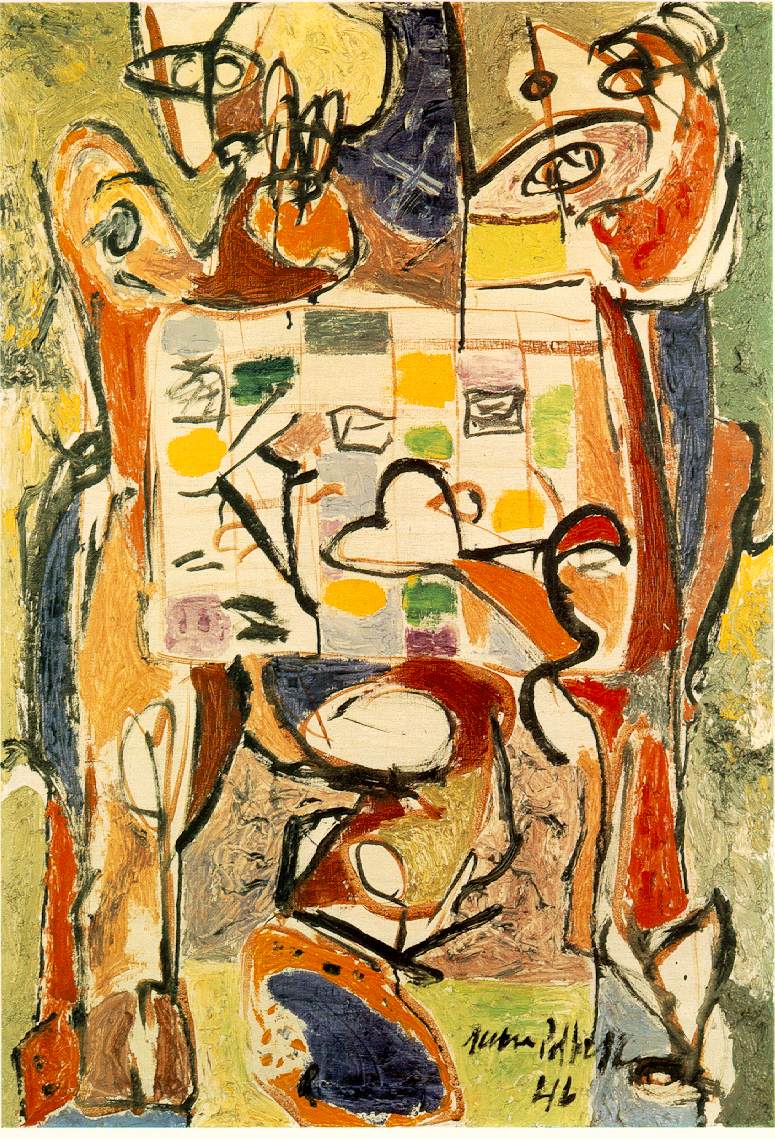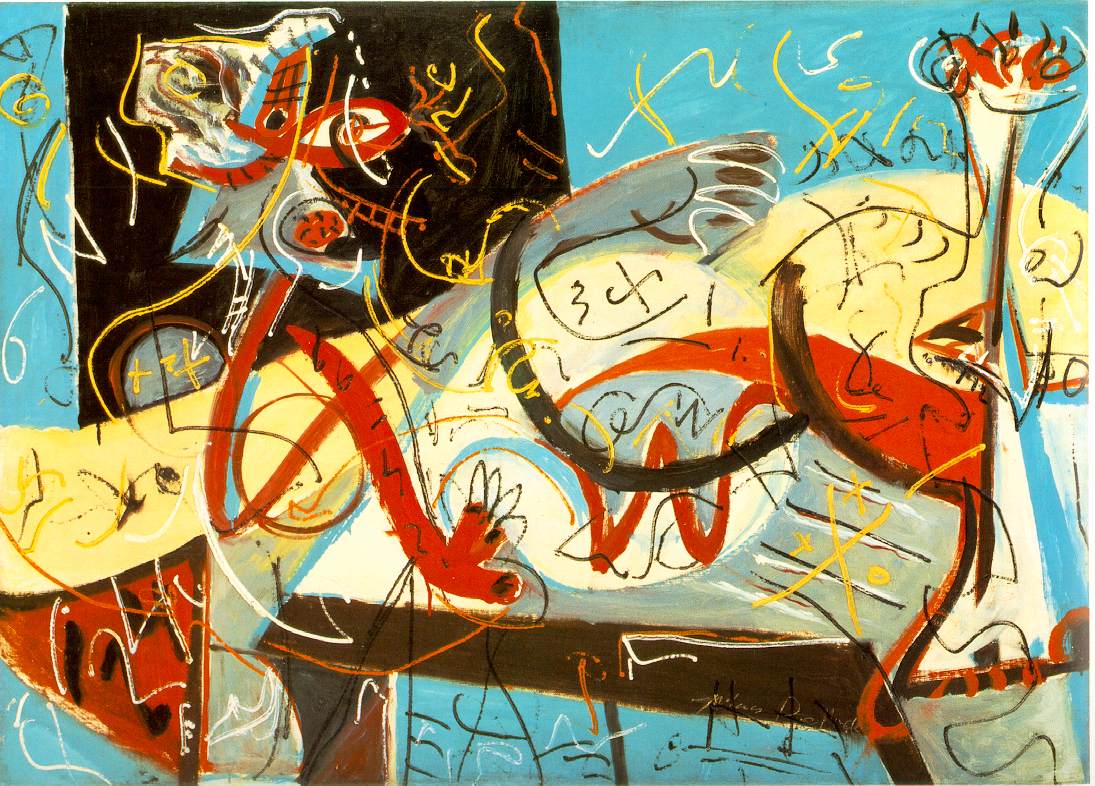It is the American way to stand up for freedom of expression. However, that grants many people the freedom to express that freedom of expression should be limited. Just as Hitler felt that art of the German Expressionist movement was dangerous and corrosive, there were many Americans, such as George Dondero, who felt that American Expressionism was "an instrument of Communism subversion... that blended fact with fantasy." (Matthews, P 155) We have seen that people interpret art in different ways, especially abstract art, however now we will take a look at how different people view the effects of the distribution of that art.
The Cold War was a time of angst and paranoia, while the United States was promoting the appeals of democracy and freedom all around the globe, we were having some trouble putting theory into practice at home. Fear of Communists on the inside led to a modern version of a witch hunt, people who were not perfectly patriotic were hunted down as heretic. It was this fear of the foreign that provoked some more conservative thinkers to speak out against the abstract movement that was Expressionism. Expressionist art tends to distort reality to put a more emotional spin on what the artist is trying to represent. Often, sentiments of chaos and unrest are symbolized by the unclear art. This form of art leaves much open to interpretation, "many artists abdicated responsibility... to the uses to which their artwork was put" (Cockcroft, P 147). While some interpret the art as brilliant, or as expressing their own feelings that they could not articulate themselves, others see a malevolent side to it. Some critics (including politicians and anyone else in a position of power) see stirrings of uprising in expressionism, they see threats to the State. Not only does this kind of "degeneracy" promote civil disobedience among citizens, but if the art is distributed around the world, it gives other people the idea that perhaps our democracy is not the utopia we build it up to be, perhaps there are seeds of discontent in the land of the free just as we all know there were hiding behind the iron curtain. Of course not all abstract art was created to incite revolution, much of it was simply a visual way to voice an opinion about "social injustices" that struck the artist. Yet the vague way in which expressionists chose to convey their message made many people uncomfortable. The ambiguity was not something that already mistrustful people could handle, thus it evoked a reaction of suspicion and often, dislike.
There are, however, two sides to a coin, and for all those condemning abstract art, there were quite a few people fervently promoting it. While those suspicious of subversion looked upon expressionism with a weary eye, others viewed the movement as a beacon of light, shining out for the rest of the world to see. These individuals, such as Alfred H. Barr Jr. did not see expressionist art as an "instrument of Communism" but rather as one of our strongest weapons against it. The imprecise figures in abstract art did not shout "Rebel" they "demonstrated the virtues of 'freedom of expression' in an 'open and free society.'" (Cockcroft, P151) In the eyes of expressionist supporters, abstract art served many beneficial purposes; they believed that supporting expressionism would present America as "culturally up-to-date", "as free as opposed to 'regimented'", provided an opportunity to "influence intellectuals and artists being the 'iron curtain.'" Thus we see once again that it is the ambiguity in this art that allows for such a variety of responses. Surely a realistic painting of a chair would not gain half the attention as an enormous canvas smeared with vibrantly colored lines and seemingly senseless blobs (to Hitler's dismay.) When there is that much room for interpretation there is bound to be conflict between opposing views and therefore conflict as to the merit.


Night
Willem de Kooning
The Tea Cup
Jackson Pollock

Sternographic Figure
Jackson Pollock

Grace Hartigan
Franz Kline
In these five works of American, abstract, expressionist art we can better understand each opinion. Willem de Kooning's Night and Grace Hartigan's The Massacre show use dark, steely, colors that slightly depress me. I cannot be sure as to what their original intent was in creating these pieces but when I look at them, I feel a sense of gloom and despair and from de Kooning's piece a hint of frustration. People against the distribution of expressionist art would not want art with this kind of tone representing the American people in foreign markets. They would argue that this does not promote the joyous image we are trying to uphold, they might see this work as subversive because during the Cold War era it was not appropriate to display discontent. On the other hand those who support expressionism might say that these embody our message; it is okay to have emotions, and it is okay to express them, even if they do not support an ideal image.
The works of Jackson Pollock are much more colorful and have more concrete figures, yet they are undoubtedly confusing. It took me a while of examining The Tea Cup to decide that I saw four figures around some sort of table presumably having a tea party (though I still fail to see a tea cup.) In Sternographic Figure I see an ostrich, however it is not built like a natural ostrich, it seems that one of its legs is disconnected. While I am still confused I do not get the feeling of impending doom from these works, they are on the contrary, entertaining. Supporters of expressionism would take pride in the diversity of Pollock's creations, they would want to share with the world the imagination of American artists and how the government attempts to cultivate that imagination with support. People who were anti-abstraction would not appreciate these pieces as they serve to confuse, they also do not seem to make any positive political statement that could serve as propaganda for democracy over seas.
Finally Franz Kline's piece seems to me almost violent. The variety of vibrant, primary colors asymmetrically painted on the canvas comes in sharp contrast with the black lines that harshly create a drippy outline of some shape. While this is a painting I particularly like, I can see how come critics might feel that this is lacking of talent and unfit to represent the American people. The other side would argue that this is the perfect piece to represent the American open mindedness. We allow our citizens to express themselves, no matter how they are feeling. For these people it comes down to promoting the democratic foundation in personal freedom, art that expresses discontent of some kind can be equally effective as art that expresses patriotism.




1 comment:
You brought up some interesting points that I hadn't thought of when writing my blog. First of all, I had thought of the artists as sort of innocent bystanders who just wanted to freely express their ideas. But the more I think about it I begin to see that the artists brought some of this conflict and persecution on themselves. They knew that they were leaving their art open to different interpretations and also knew that there were large amounts of paranoia towards Communism in the culture in which they lived. This leads me to believe that the artists might have known that their work could be considered Communist as they were making it and in this way they could be tagged as "rebels" who knowingly stepped in to this controversy.
Another interesting point you brought up is when you talk about how those who were against abstract art didn't want the US to be represented by such chaotic and ambiguous art. I hadn't thought of the negative opinion of America that foreigners could get from abstract art but I think that is a valid point.
Post a Comment